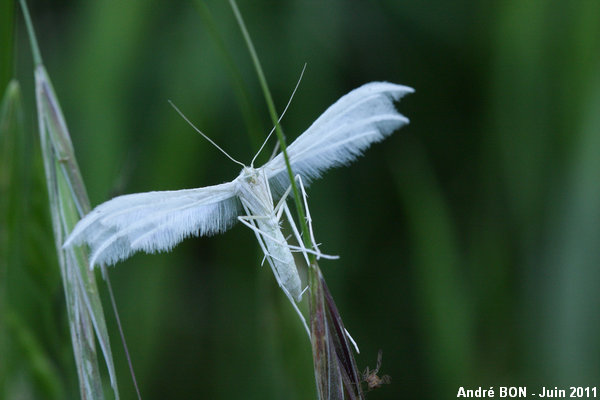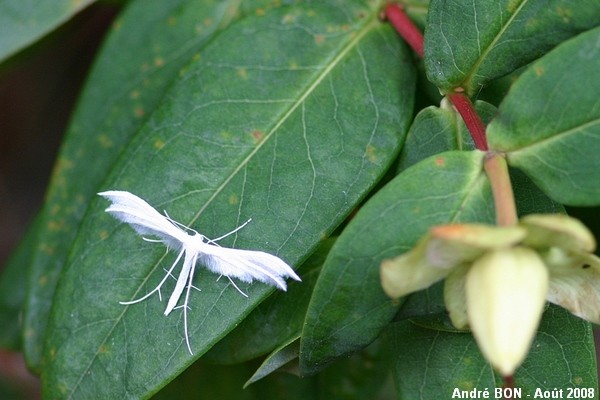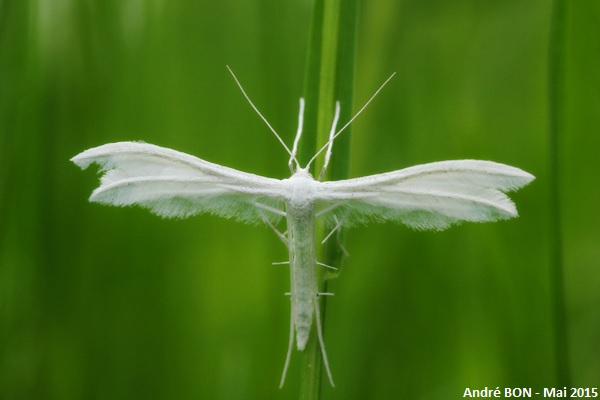



| White Plume Moth (Pterophorus pentadactylus (Linnaeus, 1758)) |




|
|
Scientific name: Pterophorus pentadactylus (Linnaeus, 1758) Common name: White Plume Moth French name: Ptérophore blanc, Ptérophore pentadactyle Order: Lepidoptera Suborder: Microlepidoptera Family: Pterophoridae Subfamily: Pteriphorinae Wingspan: 28-32 mm. Biotope: Dry grasslands, waste lands and gardens. Geographic area: Europe, Asia Minor. Flight time: May to August. Number of generations : 1 (there is sometimes a second brood in September). Caterpillar: Pale green with a dark green dorsal line, yellow marks and tufts of long pale hairs. Host plant: Bindweed (Convolvulus sp.) |
The White Plume Moth's wings end with five feathery "fingers". Its posture, wings open with a right angle, looks like the shape of the T uppercase character. The forewing is divided into two parts, the hind wing is divided into three parts. This bright white moth is one of the largest of the Pterophoridae family. The white legs also show finger-like appendages. It flies from dusk and during the night. It is attracted to light. |
| [To know more about the White Plume Moth] [Next picture] [Top] |

|
Though this is a close-up picture, it is difficult to count the five feathery "fingers". |
| [To know more about the White Plume Moth] [Next picture] [Previous picture] [Top] |

|
I wonder whether I have not thought to underexpose this view because of the bright white colour of this Plume moth? I have seen it in my garden and I had enough time to shoot several pictures. I promise that next year I will take pictures with a better exposure control. |
| [To know more about the White Plume Moth] [Next picture] [Previous picture] [Top] |

|
Same species observed three days later and 400 km further south. |
| [To know more about the White Plume Moth] [Previous picture] [Top] |

|
White Plume Moths disturbed among high grasses during the day generally do not fly very far. They are not very shy either and it's rather easy to shoot pictures. |